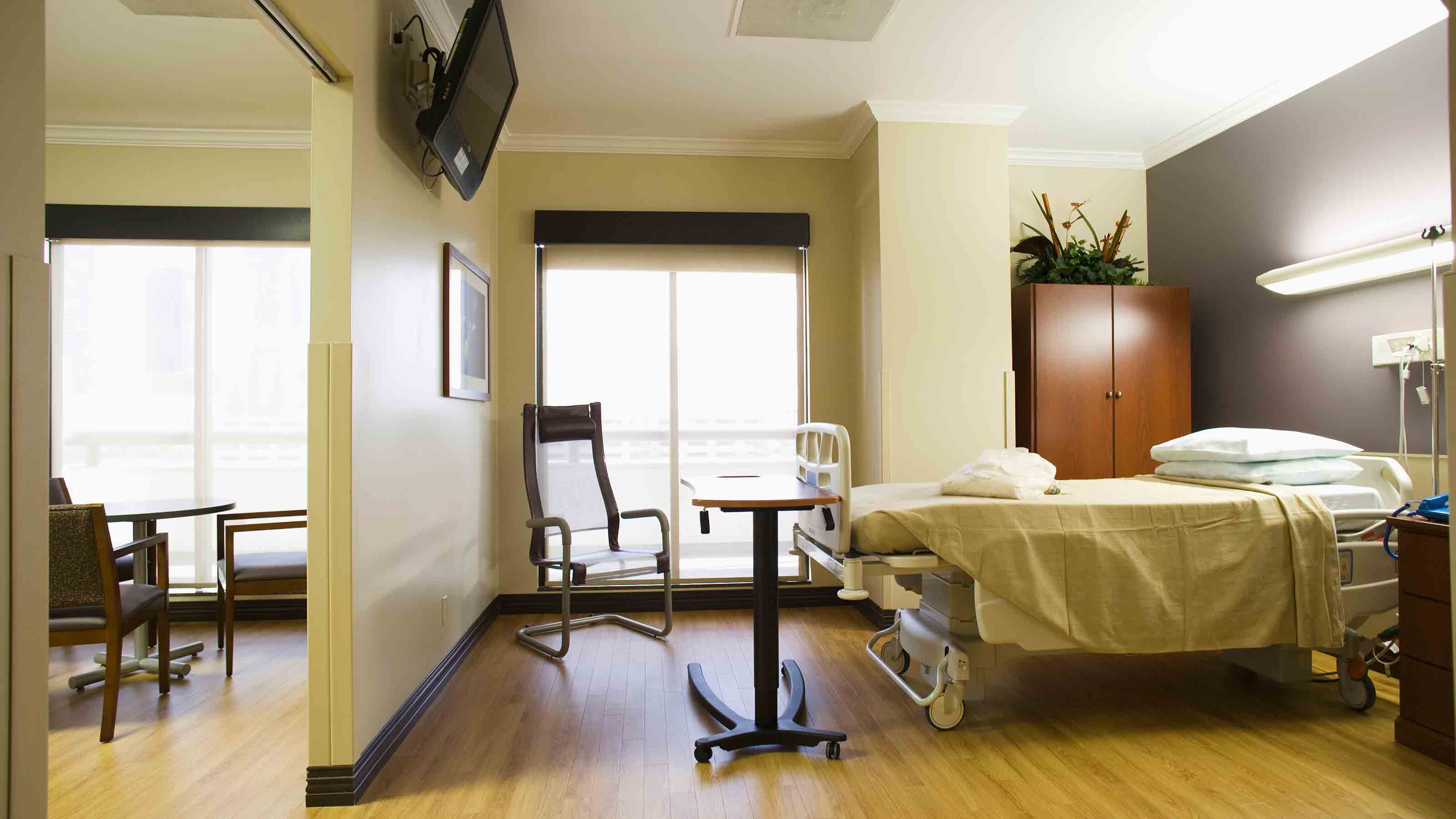Prepare for the Rising Cost of Long-Term Care
The price tag of a nursing-home room will continue to grow at a fast pace, but there are ways to offset the cost.

How much is long-term care expected to cost in 20 to 30 years? I’m in my fifties now and am wondering what the price might be to receive care in a nursing home or my home in the future.
The cost of long-term care is already high and is expected to grow at a brisk pace for the next 20 to 30 years. The median cost of a private room in a nursing home now is $206 per day across the country, which adds up to more than $75,000 per year, according to Genworth Financial’s recent Cost of Care study. And the median cost of care from a licensed home health aide is $19 per hour, which equals $152 per day for eight hours of care -- or more than $55,000 a year.
The median nursing-home cost rose by 5.1% from 2009 to 2010, and the average pace of growth has been 4.5% per year for the past five years. If the growth rate were to continue at 5% per year, then one year in a nursing home would cost nearly $200,000 in 20 years and about $325,000 in 30 years. You can estimate the future cost of care in your area at Genworth’s Cost of Care site. The prices vary a lot by location: The median cost currently for one year in a nursing home in Connecticut is $137,000, but it’s less than $59,000 in Texas.

Sign up for Kiplinger’s Free E-Newsletters
Profit and prosper with the best of expert advice on investing, taxes, retirement, personal finance and more - straight to your e-mail.
Profit and prosper with the best of expert advice - straight to your e-mail.
Home-care costs haven’t risen as quickly, in part because they’re tied to labor rates rather than health-care inflation rates. But they still increased by 2.7% over the past year and 1.7% per year over the past five years. If home-care costs rise by 3% per year, then the price tag could be more than $100,000 annually to receive home care for eight hours per day in 20 years and about $135,000 in 30 years. Home-care prices also vary considerably by location. The median hourly cost now for a home health aide provided by a state-licensed agency in Alaska, Minnesota and Rhode Island is $25 per hour, but it’s just $15 per hour in Alabama and West Virginia.
Those figures show how important it is to consider potential long-term-care costs when planning for retirement. The Community Living Assistance Services and Supports (CLASS) Act, part of the health-care-reform bill, will introduce a voluntary federal long-term-care program next year that people can pay for through payroll deductions. But the $50 to $75 in daily benefits the federal program will provide falls far short of the average cost of care, and premiums for the program may end up costing more than a private long-term-care insurance policy with similar coverage. See What Health Reform Means for Long-Term Care for more information about the CLASS Act and its limitations.
A long-term-care insurance policy may help you cover a much larger portion of potential costs. See Long-Term Care You Can Afford for more information about new strategies for lowering long-term-care insurance costs.
Get Kiplinger Today newsletter — free
Profit and prosper with the best of Kiplinger's advice on investing, taxes, retirement, personal finance and much more. Delivered daily. Enter your email in the box and click Sign Me Up.

As the "Ask Kim" columnist for Kiplinger's Personal Finance, Lankford receives hundreds of personal finance questions from readers every month. She is the author of Rescue Your Financial Life (McGraw-Hill, 2003), The Insurance Maze: How You Can Save Money on Insurance -- and Still Get the Coverage You Need (Kaplan, 2006), Kiplinger's Ask Kim for Money Smart Solutions (Kaplan, 2007) and The Kiplinger/BBB Personal Finance Guide for Military Families. She is frequently featured as a financial expert on television and radio, including NBC's Today Show, CNN, CNBC and National Public Radio.
-
 6 Stunning Waterfront Homes for Sale Around the US
6 Stunning Waterfront Homes for Sale Around the USFrom private peninsulas to lakes, bayous and beyond, Kiplinger's "Listed" series brings you another selection of dream homes for sale on the waterfront.
By Charlotte Gorbold Published
-
 Six Reasons to Disinherit Someone and How to Do It
Six Reasons to Disinherit Someone and How to Do ItWhether you're navigating a second marriage, dealing with an estranged relative or leaving your assets to charity, there are reasons to disinherit someone. Here's how.
By Donna LeValley Published
-
 Short-Term Insurance Plans' Good, Bad and Ugly
Short-Term Insurance Plans' Good, Bad and Uglyretirement You'll need a clear-eyed analysis to gauge the value of short-term care insurance plans and if they're right for you.
By David Rodeck Last updated
-
 Retirees, This Is What It Takes to Be Your Own Insurer
Retirees, This Is What It Takes to Be Your Own InsurerLong-Term Care Insurance The costs of long-term care are already exorbitant and will only get worse. Follow this guidance to get in front of the issue.
By Jackie Stewart Published
-
 You Can Keep Some Assets While Qualifying for Medicaid. Here's How
You Can Keep Some Assets While Qualifying for Medicaid. Here's HowLong-Term Care Insurance There are some tools you can use to avoid spending down all of your assets, and potentially impoverishing a spouse, while still meeting the qualifications for Medicaid.
By David Rodeck Published
-
 Insurance for Long-Term Care at Home
Insurance for Long-Term Care at Homeretirement In the wake of COVID-wracked nursing homes, increasingly more people are looking at options to age in place with long-term care insurance.
By Alina Tugend Published
-
 Time for an Insurance Review
Time for an Insurance ReviewCoronavirus and Your Money You may need to update your policies in light of COVID-19.
By Daniel Bortz Published
-
 The Real Reasons People Decide to Buy Long-Term Care Insurance
The Real Reasons People Decide to Buy Long-Term Care InsuranceLong-Term Care Insurance Before you dig into costs, benefits and contingency plans, step back and look at the big picture. This decision is bigger than budgets and life-expectancy tables. It's about your family and your wishes for them as well as yourself.
By Dennis Ho, FSA, CFA® Published
-
 Avoid the Obstacles of Long-Term-Care Claims
Avoid the Obstacles of Long-Term-Care ClaimsLong-Term Care Insurance Filing a claim can be an ordeal, but these preventive measures will streamline the process.
By Kimberly Lankford Published
-
 What to Know Before Purchasing a Long-Term Care Rider
What to Know Before Purchasing a Long-Term Care RiderLong-Term Care Insurance Do you know the difference between a long-term care rider and chronic illness rider? Section 7702B and Section 101(g)? If you're contemplating a life insurance policy or annuity with a long-term care rider, make sure to understand the key terms.
By Carlos Dias Jr., Wealth Adviser Published